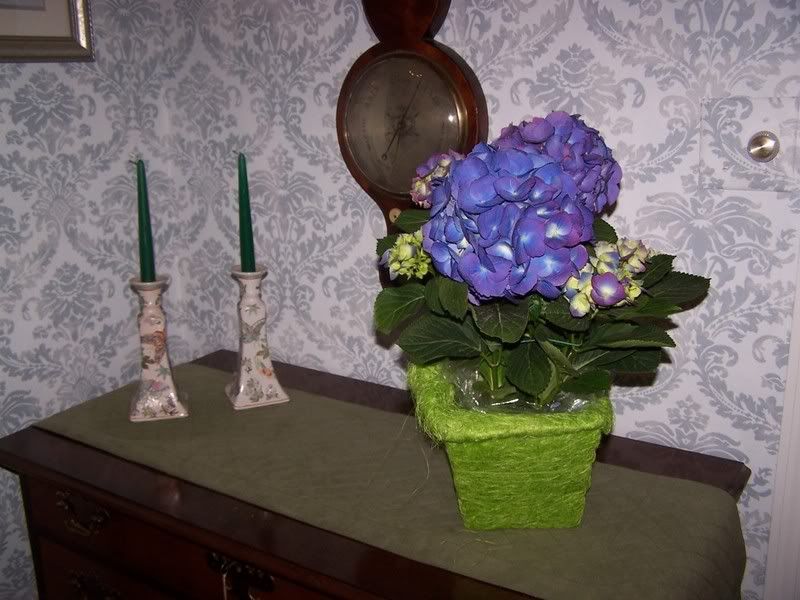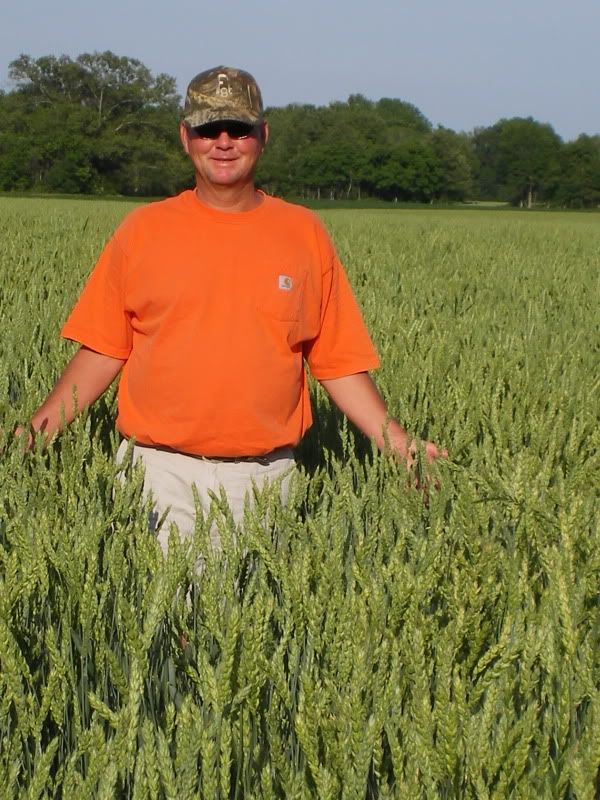YOU HAVE
ADDED TO THE WEEKLY GARDENING PING LIST
Posted on 05/07/2010 6:30:17 AM PDT by Red_Devil 232
Good morning gardeners! If you are a gardener or you are just starting out and are in need of advice or just encouragement please feel free to join in and enjoy the friendly discussion. There are many Freepers from all over the Good Ol’ USA that are willing and eager to help.
I thought a little primer on fertilizers might come in handy this time of year especially to those of you just starting out.
What do the numbers mean?
Every bag or container of commercial fertilizer has a three number code that tells you the percentage that that particular fertilizer has of the "Big Three" nutrients used by plants.
The big three nutrients are, in the order listed on the container:
A bag of fertilizer labeled as 13-13-13 will have equal percentages of nitrogen, phosphorous and potassium for a total of 39%; the rest is filler.
Ideally a soil test is needed to determine how much of these nutriments your soil needs.
Also the type of vegetables or plants you are growing may require different percentages of these nutriments to grow or produce successfully. Know your plants needs.
And remember small amounts will go a long way. Don't over fertilize. Too much at one time or too often can overwhelm plant systems and cause problems.
Thank you!
Home Depot has several sizes such as thsese... Mash Here
YOU HAVE
ADDED TO THE WEEKLY GARDENING PING LIST
I am doing pumpkins again this year ... adding some white ones too! Also growing some indian corn and interesting gourds to sell for decorating with the pumpkins. If I can squeeze it in, I’m going to bale the straw left when we cut our wheat in June, so I’ll have the entire decorating package. The wheat straw should make a prettier gold bale than the regular grass bales that I had last year.
I’ve got a fairly large patch of grass/pasture weeds to dig out to accommodate my corn patch. I’m not looking forward to the job. Looking at Just a Dumb Blonde’s gorgeous plantings, it gives me an idea. I’m looking for suggestions and am open to anything that will save me a day of digging.
I have a Mantis tiller, for information’s sake.
I’m going to raise the bed where my corn will be about 6-8 inches, surrounded by landscape timbers. What if I covered the weedy grass (my husband says to burn it first — yes/no?) with weed cloth, or newspaper, and cut an x everywhere I’m going to put a corn mound. Then I pile my soil additives on top of the weed cloth, or newspaper and plant my seeds, or started seeds, there. Would the roots of the corn, etc. work their way down through the matted grass into the soil with such a method? Woudl the weed cloth and/or newspaper layer stop most of the weeds from come back up? Would the corn, beans, squash get enough nutrients (supplemented by lots of manure and other fertilizer) to grow and produce?
A lot of the farmers around here get paid for “no till”. So do I really have to till?
Glisten is a nice look! Goes hand in hand with Glow.
I was so used to getting up at 5 AM and working on the farm before heading for school. I was not used to three big square meals per day. Boot camp was like a vacation for me.
I am still around 190 now, and have to watch how far apart I plant my garden rows. I did use re-bar for staking some of the tomatoes this year. Yes, life is an injustice to us gardeners.
1) Where’d you get those neat tomato cages?
2) I received a beautiful hydrangea from my daughter — FTD — and it came with care instructions for every plant that they could have sent — EXCEPT my hydrangea. Many hydrangeas grow in WI and some will not. This one is bright blue with green and pink tinged edges before the petals fully color up. It is unmarked. Do you have any suggestions for miscellaneous hydrangea care in WI?
Or, is this heartbreak waiting to happen? I’ll take a picture and post it.
This is one problem. You are going to make some nice timbered beds for corn but corn should not be grown in the same place each year. I would grow corn the regular way...not in beds. You could rotate with beans.
Use the raised beds for other vegetables - my opinion
I like your heavy clay. You have an inheritance of river born trace minerals there
I really did not know wheat was grown in La. Is it a common crop grown in our areas?
You do not want to know what I paid for smallish wheat bales at Lowe’s this year!

This is my mystery hydrangea. It is balled and burlaped and ready to plant. The problem is that I do not know which variety it is, or whether it will survive in WI. Or, should I just enjoy it in a pot?
The photo colors are not quite true. It actually has more of a violet tint, than a true blue. It's striking. And I know enough about hydrangeas that I know never to expect it to produce this color again in my garden, if it survives.
Thank you. Actually, that is my intent. But I have to persuade my husband to help me to put these in. I knew that I was going to run out of space, but my husband was reluctant to give me any more. They can easily be converted to other plants next year. And growing beans with them may just allow them to be used two years for corn — or all beans next year — or all squash — or ???
Exactamundo. It is never a shameless plug when providing a link to products and services that helps us all become better gardeners.
It is also in our best interest to help support businesses that employ all those conservative Freepers out there... :-)
corn is a notorious nitrogen eater. You can rotate it with beans which give off nitrogen. Not necessarily grow at same time. But you could. Squash....grow wherever you like
Don’t be limited. Bottom line is don’t grow corn on the same spot year after year
Yep, wheat is common here ... they have developed varieties that produce very well. We have only 400 acres this year, which is part of a rotation with cotton, as the wheat provides much organic matter to the soil. If you have irrigation, you can plant cotton right after the wheat is harvested and it will be no-tilled directly into the beds covered with wheat stubble. Here's my farmer hubby in a wheat field:

Nice wheat; cute hubby. Make sure he wears sun screen.
When you say “spot” do you mean the whole bed, or the exact spot? I’m planning on growing the corn in “hills” alternated with squash hills. Beans will be grown WITH the corn — right up the stalk. Would it be enough of a change to grow the corn in the squash hills the following year and the schash in the corn hills? Or, do I have to abandon the whole bed? I figured that the beans would add enough nitrogen to “fix” the bed for the following year.




If you are growing corn that way then perhaps you can grow it in that same corn-beans-squash plot each year. You wont be able to stake out the exact spot where each corn plant was......And put beans exactly there the next year. Just hoe the soil around and mix it
Disclaimer: Opinions posted on Free Republic are those of the individual posters and do not necessarily represent the opinion of Free Republic or its management. All materials posted herein are protected by copyright law and the exemption for fair use of copyrighted works.